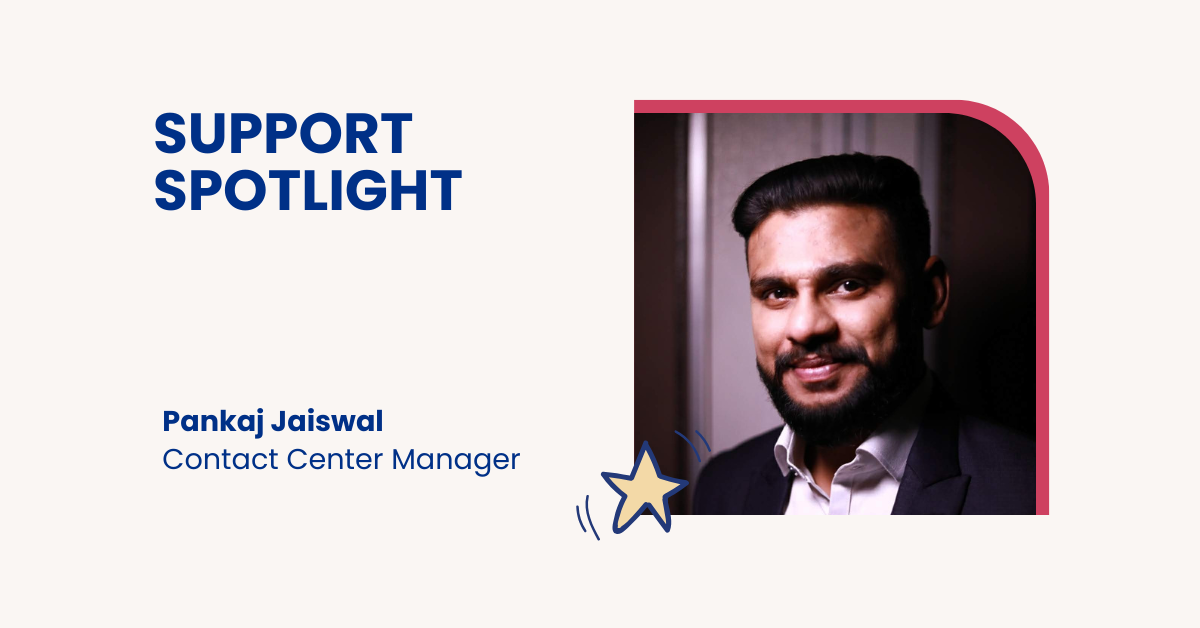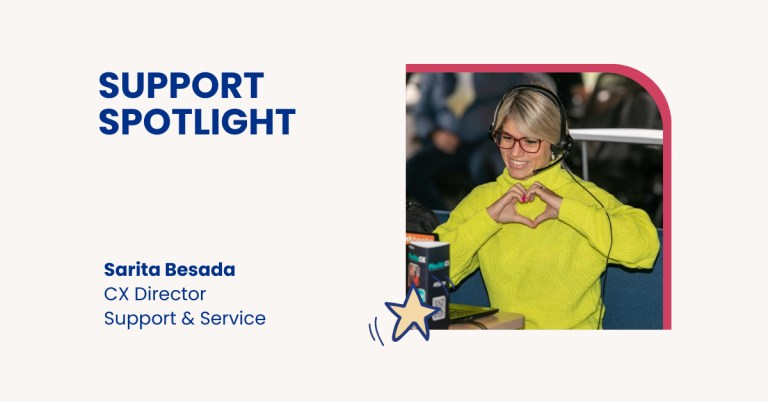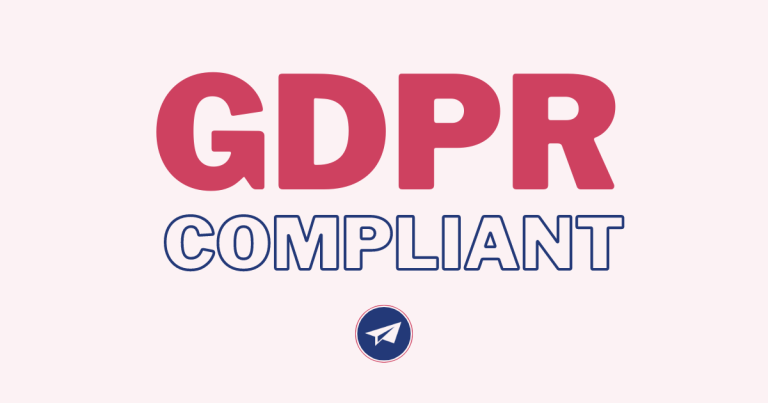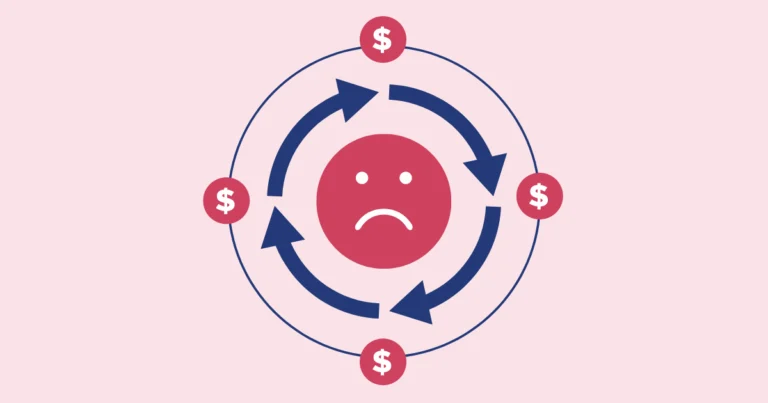In this interesting discussion, CoinSwitch’s contact center manager, Pankaj Jaiswal, shared his journey and learnings from his 10 years of experience in customer support. He also shared his perspectives on what makes a good support leader and how to keep support agents motivated.
Tell us about your journey. How did you end up working in customer service?
In the corporate world, it’s important to be open to opportunities and remain flexible. We should also continue learning in order to enhance our skills to succeed in any field. This has been my mindset throughout my more than a decade of experience in the service industry. I started my journey in a call center and it has since been a rollercoaster ride of growth, from becoming a team leader to an assistant manager, then a senior manager in a multinational company and eventually moving to the other side of the table to become a client and manage multiple outsource partners (OSP). I have initiated multiple projects and shared my expertise with these partners, which eventually helped them to improve the deliverables, optimizing resources utilization and also enhancing the user experience.
How does your day-to-day look like as a contact center manager?
At CoinSwitch, I was hired as an Account Manager and initially assigned to manage outsource partners being responsible for end-to-end business operations from hiring to training, setting up operational KPIs, customer experience and compliance delivery of partners. Due to global market slowdown, we had to explore new opportunities to enhance the users’ experience and ensure optimal utilization of resources. For example, we introduced a separate queue (Premium queue), differentiating customer handling for high-value users, video call support and regional language support. We also introduced bots to handle basic queries. These experiments were not only cost-effective and optimized user experience, but they also prevented our advisors from getting burned out, giving them enough time for learning, training, and skill enhancement.
Currently, my role involves working on the launch of new products. Which comprise preparing FAQs, help and support and liaison with other departments in order to fix any obstacles / bugs found in the product to ensure a smooth launch.
When it comes to new products, how do you prepare your support team for the launch?
First of all, it’s very important that the advisors who will handle user queries get the complete training about the product and the industry, before the launch of a new product. Creating SOPs and FAQs are equally important but a complete knowledge about the product enables the advisors to relate to the users’ pain points and provide appropriate and satisfactory resolutions.
To ensure that advisors are well-equipped to handle users’ queries, we provide them training before the launch. This includes training on the Industrial module, query-request-complaint (QRC) handling, tagging, resolution and close looping. After that, we carry out an internal launch to check the app flow and vet all the SOPs internally before offering the product to external users.
We introduce new support channels depending on users’ needs, such as email, chat or call and cross-train our advisors accordingly. This helps to optimize the utilization of our manpower and ensures timely resolution for the users. In case there is a queue in emails, we can easily switch agents from chats to emails to ensure that all queries are addressed in a timely manner.
You mentioned agent burnout previously, what steps do you take to prevent employee burnout?
As someone with over a decade of experience and more than eight years as a leader, I truly believe that being a good people manager is essential to be a great leader.
There are some preventive measures that can help us to improve our employee satisfaction and avoid agent burnout:
- Respect for individuals: Regardless of their designation, respect for every individual should be the primary value of every organization.
- Open door policy: Agents should have easy access to the leadership team and leaders should be willing to address their issues.
- Skip sessions or FGD (focus ground discussions): Senior leaders should directly connect with all agents to understand the pulse of the ground level and listen to the VOA.
- One-on-ones: Many people hesitate to voice out and share their issues in front of a wider audience. Hence, it’s important to conduct one-on-one meetings with agents and give them a platform to share their concerns.
- Workforce planning: Most of the call centers take 85-90% occupancy into consideration while determining their workforce needs. However, if there’s a sudden increase in volume, this can have an adverse impact on the agents’ mindset, leading to burnout and a decline in conversation quality. I believe that if the overall occupancy is trending at 60 to 70%, your advisors will never feel burned out. Adequate manpower should be kept in a buffer to a certain extent to prevent an extra cost burden while ensuring that advisors do not feel overburdened. Also, incorporating agents’ leave preferences whenever possible and following break schedules help advisors to balance their personal life along with work.
And how do you measure employee satisfaction in your organization?
We have several measures in place to gauge employee satisfaction.
- NPS Survey: We conduct quarterly NPS (Net Promoter Score) surveys to determine the inter department level satisfaction, feedbacks and workarounds.
- Span Feedback Survey: This survey is being conducted on monthly basis, wherein employees share the feedback about their immediate manager/team leader.
- Manager Feedback Survey: This survey is being rolled out by the HR team on quarterly basis to check the ESAT and get feedback from employees about their managers.
Those managers who receive 100% in the ‘Span Feedback Survey’ are recognized and rewarded. This has three outcomes: first, we receive feedback from employees on how managers are performing; second, good managers are recognized and appreciated, encouraging them to continue doing good work; third, we identify areas of concern for managers who are not scoring well and provide them training on how to become better people managers. This approach helps to improve overall employee satisfaction and helps to create more effective leaders in the organization.
How do you approach learning and coaching in your department?
Continuous learning and improvement are an integral part of our professional journey, and we often receive coaching and feedback from our colleagues, subordinates, and seniors. Acting upon constructive feedback and working on areas of improvement is key to our professional growth. When it comes to employee feedback, we prefer closed-room one-on-one discussions and follow the principle of appreciating in public and reprimanding in private. We give feedback on both the areas of strength and areas of improvement, acknowledging the good work and effort put in while also highlighting the areas of concern that may have affected user experience.
Furthermore, we have a defined performance management programme BQM (Bottom Quartile Management), where we train and empower employees falling under the bottom quartile to improve their performance and move up the quartile.
You’ve been a customer support leader for over 8 years. What are the qualities of a good support leader in your opinion?
Every leader has their own style of managing a team. But I believe we should adapt our leadership style considering the situation. For example, I’ll become a visionary leader when I have to share a business or process goal with the team and on the other hand, I will become a democratic leader to value people’s input and get commitment through participation.
When it comes to customer support, these are 3 important qualities of a great support leader:
Communication: It’s important for a leader to communicate in a positive and effective manner so that the team understands it well and gets aligned to the thought process or expectation of the leader.
People management: Being a good people manager is crucial because we work with people, so we should primarily focus on taking care of our people to ensure a balance between employee and customer satisfaction.
Analytical thinking: A leader shouldn’t make a decision looking at the problem. They should analyze the problem to get the root cause behind it and think strategically to prepare an effective action plan.
Can you give an example of using root cause analysis to improve your support operations?
The process for conducting a root cause analysis varies depending on the KPI being analyzed. There are multiple tools available to analyze the root cause of any problem such as Pareto, IFD, 5 Whys and lots more. But, to conduct a successful root cause analysis, it is important to deep dive into the issue, examining it at all levels and identifying where the problem lies. Once the root cause is identified, the necessary steps can be taken to fix it and achieve the desired outcome
While working on a recent project to improve efficiency metrics, I began by identifying the AHT (average handling time) for each line of business (email, chat, and call support). Then we conducted a deeper analysis by examining issue sub-types and identifying areas where advisors were struggling and witnessed that 2 top drivers were impacting the overall AHT.
By analyzing interactions at the granular level, we were able to identify areas where process amendments could be made and one issue type, wherein agents using long holds were reaching out to subject matter experts (SME) for help due to knowledge gaps. As an action, a simple SOP amendment and quick refresher for agents helped to bring down the AHT and improve the process efficiency.
With all the knowledge and experience you’ve gained over the years, what advice would you give to somebody starting their career in customer support?
My primary piece of advice for all aspiring support leaders is to always be a good people manager. CSAT is one of the most important metrics of the industry, but so is ESAT. Our agents are our internal customers, we need to take care of our internal customers so that they will take care of our external customers. “Happy agents = Happy customers”.
Secondarily, we should continue learning and enhancing our skills. This might not help you immediately/quickly but will help to accomplish our professional goals in the longer run. “Be competent, success will run after you”.

Pankaj Jaiswal
Pankaj Jaiswal is the Contact Center Manager at CoinSwitch, India’s largest Crypto trading platform. Pankaj is a delivery-oriented leader with over 10 years of experience in the service industry across all strategic business models and channels. He has hands-on knowledge of inbound and outbound contact centres, outsourcing, operations, transition, sales, e-commerce, telecom, and fintech. As a support leader, Pankaj prioritizes both internal and external customers, recognizing that a happy and engaged employee is critical to delivering exceptional customer service.
Did you like the post?
You might also like:

Surveypal
Everything you need to lead and improve your customer experience. Learn more at surveypal.com, or






